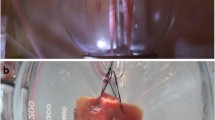Abstract
Artificial Life (ALife) has two goals. One attempts to describe fundamental qualities of living systems through agent based computer models. And the second studies whether or not we can artificially create living things in computational mediums that can be realized either, virtually in software, or through biotechnology. The study of ALife has recently branched into two further subdivisions, one is “dry” ALife, which is the study of living systems “in silico” through the use of computer simulations, and the other is “wet” ALife that uses biological material to realize what has only been simulated on computers, effectively wet ALife uses biological material as a kind of computer. This is challenging to the field of computer ethics as it points towards a future in which computer and bioethics might have shared concerns. The emerging studies into wet ALife are likely to provide strong empirical evidence for ALife’s most challenging hypothesis: that life is a certain set of computable functions that can be duplicated in any medium. I believe this will propel ALife into the midst of the mother of all cultural battles that has been gathering around the emergence of biotechnology. Philosophers need to pay close attention to this debate and can serve a vital role in clarifying and resolving the dispute. But even if ALife is merely a computer modeling technique that sheds light on living systems, it still has a number of significant ethical implications such as its use in the modeling of moral and ethical systems, as well as in the creation of artificial moral agents.
Similar content being viewed by others
References
M. Anderson, S.L. Anderson and C. Armen. Towards Machine Ethics. In Proceedings of AAAI Workshop on Agent Organizations: Theory and Practice, San Jose, CA, July, 2004
M.A. Bedeau. Philosophical Aspects of Artificial Life. In Towards a Practice of Autonomous Systems. Proceedings of the first European Conference on Artificial Life, pp. 494–503, MIT Press, Cambridge, 1992
M.A. Bedau. Artificial Life. In L. Floridi, editor, Philosophy of Computing and Information. Blackwell Publishers, 2003
R Dawkins (1989) The Selfish Gene Oxford University Press Oxford
R. Dawkins. The Blind Watchmaker: Why the Evidence of Evolution Reveals a Universe Without Design. W.W. Norton and Company, Inc., 1996
D. Dennett (1994) ArticleTitleArtificial Life as Philosophy Artificial Life 1 IssueID3 291–292 Occurrence Handle10.1162/artl.1994.1.291
D Dennett (1995) Darwin’s Dangerous Idea: Evolution and the Meanings of Life Simon and Schuster New York
M. Elton. Should Vegetarians Play Video Games? Philosophical Papers, 2000
C. Emmeche. Life as an Abstract Phenomenon: Is Artificial Life Possible? In Towards a Practice of Autonomous Systems. Proceedings of the first European Conference on Artificial Life, pp. 466–474, MIT Press, Cambridge, 1992
C Emmeche (1994) The Garden in the Machine, the Emerging Science of Artificial Life Steven Sampson, translator, Princeton University Press Princeton
J.M Epstein R Axtell (1996) Growing Artificial Societies: Social Science from the Bottom Up MIT Press Cambridge
L. Floridi J.W. Sanders (2004) ArticleTitleOn the Morality of Artificial Agents Minds and Machines 14 IssueID3 349–379 Occurrence Handle10.1023/B:MIND.0000035461.63578.9d
S Helmreich (1998) Silicon Second Nature: Culturing Artificial Life in a Digital World University of California Press Berkeley
J. Horgan. From Complexity to Perplexity. Scientific American, June: 104, 1995
J. Horgan. The End of Science. Addison-Wesley, Reading, 1996
C.G. Langton. Artificial Life. In Chris Langton, editor, SFI Studies in the Sciences of Complexity, Proc. Vol. VI. Addison-Wesley, Redwood City, 1989
S Levy (1992) Artificial Life: The Quest for a New Creation Pantheon Books New York
R Lewontin (1992) Complexity: Life at the Edge of Chaos Macmillan Publishing Company New York
E.T Olson (1997) ArticleTitleThe Ontological Basis of Strong Artificial Life Artificial Life 3 IssueID1 29–39
H.H. Pattee. Simulations, Realizations, and Theories of Life. In C. Langton, editor, Artificial Life: The Proceedings of an Interdisciplinary Workshop on the Synthesis and Simulation of Living Systems, held September 1987, in Los Alamos, New Mexico, Vol. 6. Addison-Wesley, Redwood City, CA, 1989
J.W Pepper B.B Smuts (2000) The Evolution of Cooperation in an Ecological Context: An Agent-Based Model T.A Kohler G.J Gumerman (Eds) Dynamics in Human and Primate Societies: Agent-Based Modeling of Social and Spatial Processes Oxford University Press New York
J. Rauch. Seeing Around Corners: The New Science of Artificial Societies. The Atlantic Monthly, April, 2002
S. Rasmussen. Aspects of Information, Life, Reality, and Physics. In C. Langton, C. Taylor, J.D. Farmer, S. Rasmussen, editors, Artificial Life II: The Proceedings of the Workshop on Artificial Life, held February 1990 in Santa Fe, New Mexico, Vol. 10, pp. 767–774. Addison-Wesley, Redwood City, 1992
S Rasmussen L Chen D Deamer D Krakauer N Packard P Stadler M Bedau (2004) ArticleTitleTransitions From Nonliving and Living Matter Science 303: 963–965 Occurrence Handle10.1126/science.1093669
T. Ray. An Approach to the Synthesis of Life. In C. Langton, C. Taylor, J.D. Farmer S. Rasmussen, editors, Artificial Life II: The Proceedings of the Workshop on Artificial Life, held February 1990 in Santa Fe, New Mexico, Vol. 10, pp. 767–774. Addison-Wesley, Redwood City, 1992
E. Sober. Learning From Functionalism – Prospects for Strong Artificial Life. In C. Langton et al., editors, Artificial Life II: The Proceedings of the Workshop on Artificial Life, held February 1990 in Santa Fe, New Mexico, Vol. 10. Addison-Wesley, Redwood City, 1992
E Sober D. Wilson (1998) Unto Others: The Evolution and Psychology of Unselfish Behavior Harvard University Press Boston
J. Sullins (2000) ArticleTitleKnowing Life: Possible Solutions to the Practical Epistemological Limits in the Study of Artificial Life The Journal of Experimental and Theoretical Artificial Intelligence 12 IssueID1 13–22 Occurrence Handle1033.68918 Occurrence Handle10.1080/095281300146281
J Szostak D Bartel P Luisi (2001) ArticleTitleSynthesizing Life Nature 409 383–390 Occurrence Handle10.1038/35053176
Author information
Authors and Affiliations
Corresponding author
Rights and permissions
About this article
Cite this article
Sullins, J.P. Ethics and Artificial life: From Modeling to Moral Agents. Ethics Inf Technol 7, 139–148 (2005). https://doi.org/10.1007/s10676-006-0003-5
Issue Date:
DOI: https://doi.org/10.1007/s10676-006-0003-5




